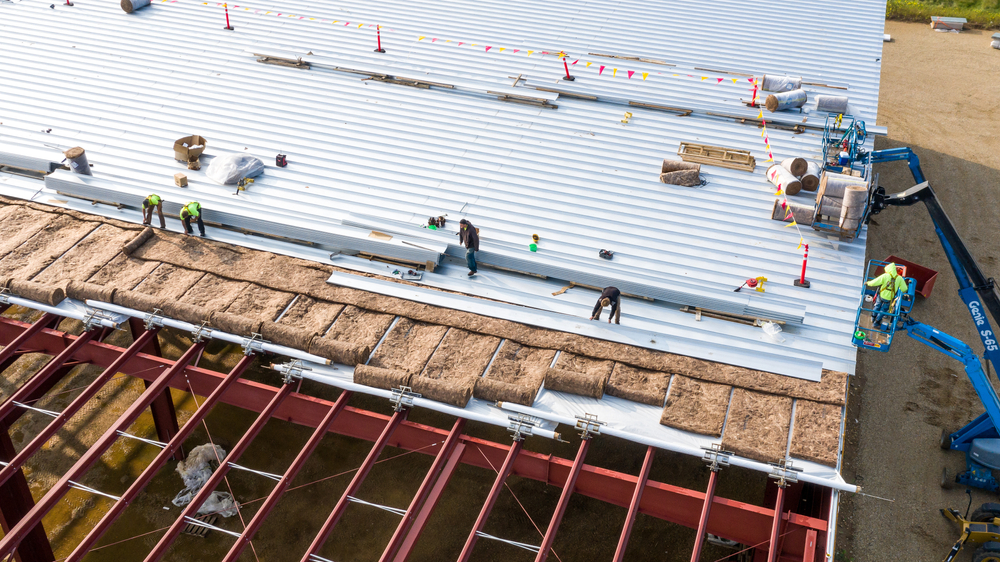
What Regulations Must be Followed When Installing a Commercial Roof?
June 28, 2024 6:16 pm Leave your thoughtsInstalling a commercial roof involves more than just choosing the right materials and ensuring a sturdy structure. It requires adherence to specific regulations and codes that vary by location. These regulations are in place to ensure safety, quality, and compliance with local building standards. This blog explores the essential regulations that must be followed when installing a commercial roof, focusing on the necessary steps and considerations.
Building Codes and Permits
Massachusetts Roofing Codes & Permits
In Massachusetts, as in many other states, roofing installations must comply with building codes enforced by local authorities. These codes specify the minimum standards for roof design, materials, and construction methods. They are intended to safeguard against structural failures, ensure fire safety, and promote energy efficiency. Before starting any roofing project, it is crucial to obtain the necessary permits from the local building department. These permits typically require detailed plans and specifications to ensure compliance with the codes.
Structural Considerations
Commercial roofs must be designed to withstand various environmental factors such as wind, snow loads, and seismic activity. The structural integrity of the roof is critical for the safety of the building occupants and the longevity of the roof itself. Contractors must adhere to engineering standards that specify load capacities and design criteria suitable for the local climate and building type.
Fire Safety Regulations
Fire safety regulations play a significant role in commercial roofing installations. Depending on the type of building and its use, specific fire-resistant materials may be required for the roof. This is particularly important for buildings where the risk of fire is higher, such as industrial facilities or buildings with large occupant capacities. Contractors must ensure that the roofing materials and assemblies meet the fire safety standards outlined in the local building codes.
Environmental Regulations
Roofing Regulations
Environmental considerations are increasingly important in roofing installations. Many jurisdictions have regulations aimed at promoting sustainability and energy efficiency in commercial buildings. These regulations may require the use of reflective roofing materials to reduce heat absorption and energy consumption, particularly in warmer climates. Contractors should be aware of these regulations and select roofing materials that comply with environmental standards while meeting the performance requirements of the project.
Safety Standards and Practices
Ensuring safety during the installation of a commercial roof is paramount. Contractors must follow established safety standards and practices to protect workers and prevent accidents. This includes providing proper safety equipment, implementing fall protection measures, and adhering to Occupational Safety and Health Administration (OSHA) guidelines. Compliance with safety regulations not only protects workers but also reduces liability for the building owner and contractor.
Inspections and Compliance
Permits
Throughout the installation process, inspections are conducted to verify compliance with building codes and regulations. Inspectors check the quality of materials, proper installation techniques, and adherence to approved plans. It is essential for contractors to schedule inspections at key milestones to ensure that any issues are identified and corrected promptly. Failure to comply with inspection requirements can result in delays, fines, or even the halting of the project until compliance is achieved.
Conclusion
Installing a commercial roof requires meticulous planning, adherence to regulations, and a commitment to safety and quality. By understanding and following the applicable building codes, permits, fire safety regulations, environmental standards, and safety practices, contractors can ensure successful roofing installations that meet legal requirements and protect the integrity of the building. Staying informed about regulatory updates and consulting with professionals when necessary are essential steps in navigating the complex landscape of commercial roofing regulations.
While navigating the regulatory landscape of commercial roofing installations can be complex, adherence to these regulations ensures not only compliance but also the safety and longevity of the structure. By following the steps outlined in this blog, contractors can confidently execute roofing projects that meet all necessary requirements and standards.
Need a Roofing Company in Springfield, MA?
Since 1987, R & H Roofing has remained one of the most trusted names in the roofing industry. We specialize in commercial and industrial roofing and offer a wide variety of roofing systems including EPDM systems, TPO Systems, Metal Roofing Systems, BUR Tar & Gravel Systems, Asphalt Shingles, and PVC Systems. We also work with some of the leading manufacturers including Firestone, Carlisle, Duro-last, and Garland. Contact us today to learn more about what we can do for you!
Categorised in: Commercial Roofing
This post was written by admin
